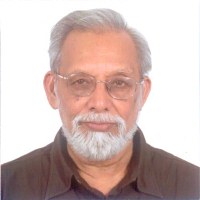Kameswara Rao Neelamraju

Stay at the IAC: 14/04/2016 a 01/06/2016![]()
Research line: Stellar and Interstellar Physics
Dr. Rao gave a Seminar at the IAC on 2014 April 1st entitled R Coronae Borealis stars and their dust.
Currently Dr. Rao is senior professor at the Indian Institute of Astrophysics in Bangalore (India).
Prof. Kameswara Rao Neelamraju obtained his Ph.D in Astronomy and Astrophysics from University of Santa Cruz, Lick Observatory, California in 1974. His thesis adviser was Dr. George Herbig. After spending a post-doctoral year at Osmania University, Hyderabad, he joined the Indian Institute of Astrophysics, Bangalore in 1975 and has been there ever since. He became a professor in 1990, a senior professor in 1998, and also served as the Dean (academic) for about eight years. He has been a regular visitor to McDonald Observatory and Department of Astronomy at Austin, Texas for several years.
His early interests were in the study of young stars. Along with George Herbig he produced a second catalogue (Herbig-Rao catalogue) of stars of Orion population. His main interests are observational studies related to stellar evolution, stellar abundances, and dust production in stars. He has been working for several years to understand the origins and evolution of Hydrogen Deficient stars of high luminosity e.g., R Coronae Borealis stars. He is also involved in the construction and launching of an Ultraviolet telescope on the proposed Indian Astronomical Satellite, Astrosat, which is expected to be launched next year.
During his stay at IAC, Prof. N. Kameswara Rao collaborated with Dr. Arturo Manchado and Dr. Aníbal García-Hernández in the interpretation of high-resolution optical spectra (e.g., as obtained with VLT/UVES and NOT/FIES) of young planetary nebulae (PNe) with fullerene-based molecules to search for diffuse interstellar/circumstellar bands and to explore their possible association with fullerenes and other complex organic molecules. As a consequence of this work, it has been reported the first possible detection of two diffuse circumstellar bands (DCBs) at 4428 and 5780 A in the fullerene-rich circumstellar environment around PN Tc 1 (Díaz-Luis et al. 2015). The presence of 4428 and 5780 A nebular emission at the radial velocity of Tc 1 further suggests their circumstellar origin. This possible detection of DCBs in an environment rich in fullerenes and fullerene-related molecules may provide a link between fullerene compounds and the diffuse interstellar bands (DIBs) carriers.



